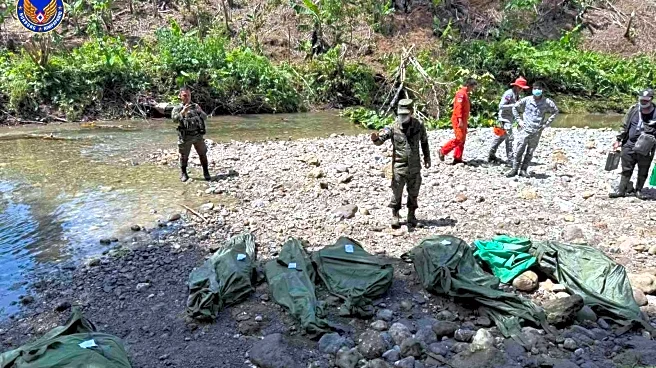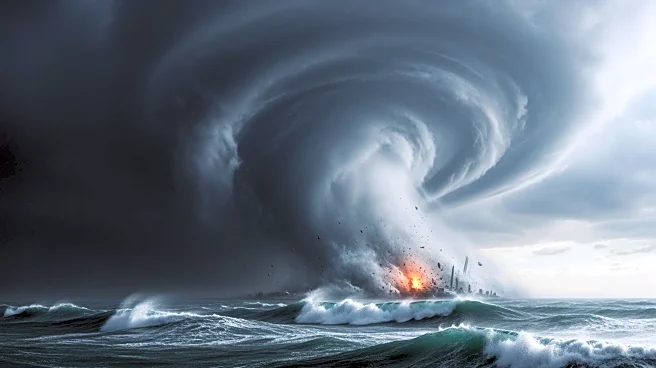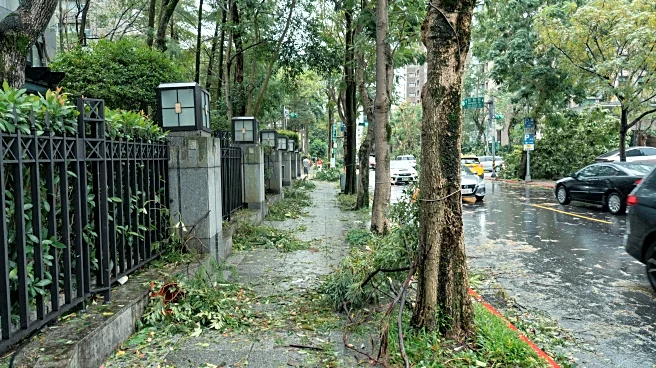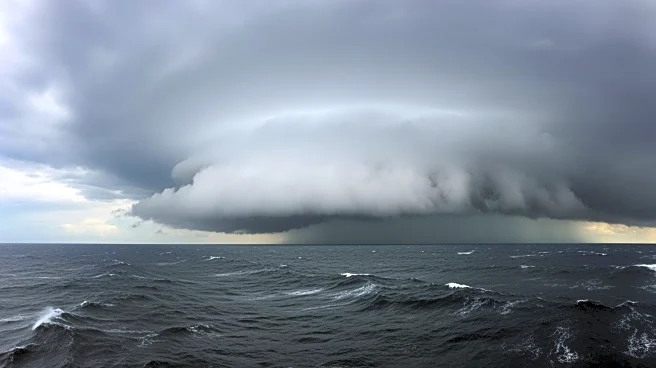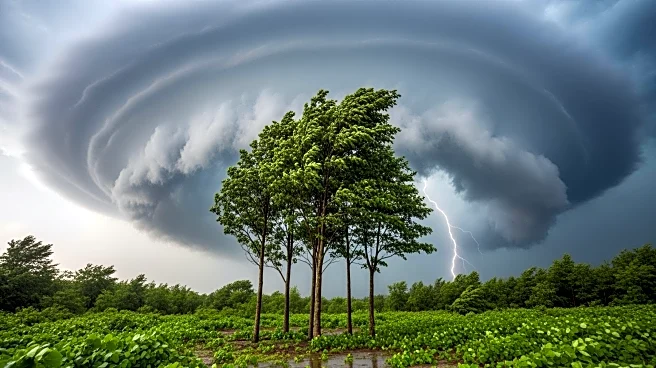What's Happening?
Typhoon Kalmaegi has resulted in significant loss of life and displacement in the Philippines and Vietnam. In the Philippines, the storm has left at least 114 people dead and 127 missing, prompting President
Ferdinand Marcos Jr. to declare a state of emergency. The typhoon displaced over 560,000 villagers, with nearly 450,000 evacuated to emergency shelters. In Vietnam, the typhoon made landfall with fierce winds and torrential rains, causing three fishermen to go missing and leading to widespread evacuations. The storm is expected to bring more than 24 inches of rain in some areas, exacerbating existing flood conditions.
Why It's Important?
The impact of Typhoon Kalmaegi highlights the vulnerability of Southeast Asian countries to natural disasters, particularly typhoons. The declaration of a state of emergency in the Philippines allows for faster disbursement of emergency funds and aims to prevent food hoarding and overpricing. The storm's impact on Vietnam's central provinces, already affected by record-breaking rains, underscores the need for effective disaster preparedness and response strategies. The frequent occurrence of such storms raises concerns about climate change and its role in intensifying weather patterns, which could lead to more frequent and severe natural disasters in the region.
What's Next?
In the Philippines, disaster-response officials are warning of another potential tropical cyclone that could strengthen into a super typhoon and affect the northern regions early next week. This could further strain the country's emergency response capabilities. In Vietnam, authorities are monitoring the situation closely as high tides and additional rainfall could lead to severe flooding in low-lying areas, including Ho Chi Minh City. Both countries may need to enhance their infrastructure and disaster management systems to better cope with future storms.
Beyond the Headlines
The recurring typhoons in Southeast Asia, including Typhoon Kalmaegi, highlight the broader implications of climate change on global weather patterns. Scientists warn that warming climates are intensifying storms and rainfall, making floods increasingly destructive and frequent. This situation calls for international cooperation and investment in climate resilience and sustainable development to mitigate the long-term impacts of such natural disasters.




